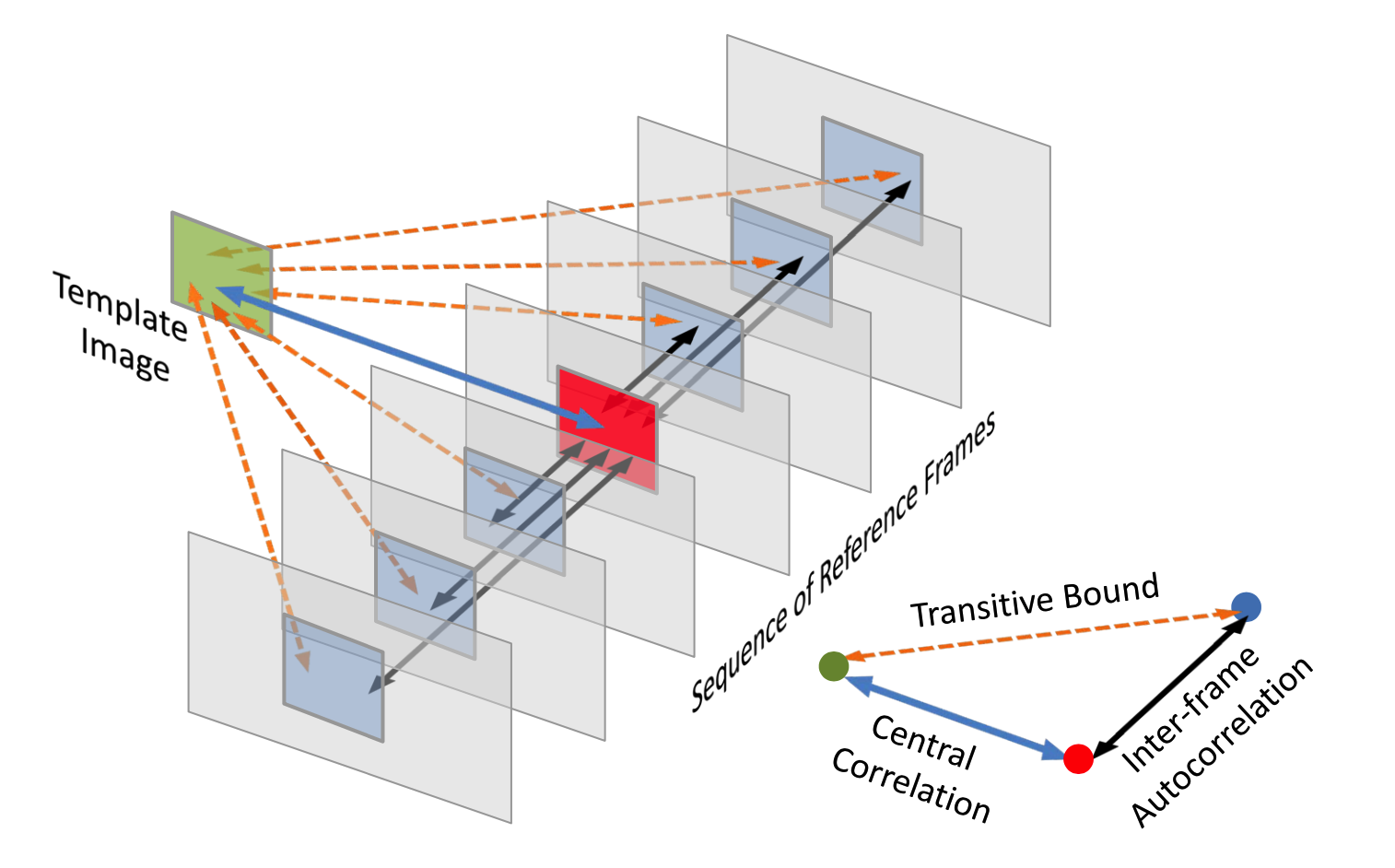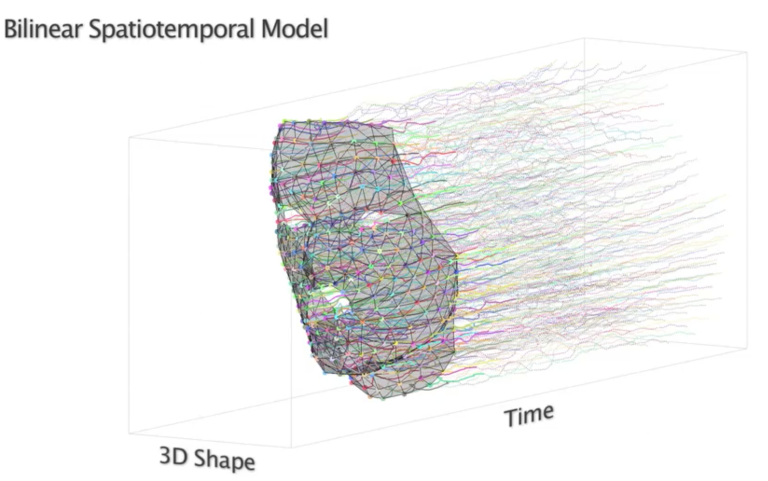Exploiting Transitivity of Correlation for Fast Template Matching – Project Page
Download our paper here.
Abstarct
Elimination Algorithms are often used in template matching to provide a significant speedup by skipping portions of the computation while guaranteeing the same best-match location as exhaustive search. In this work, we develop elimination algorithms for correlation-based match measures by exploiting the transitivity of correlation. We show that transitive bounds can result in a high computational speedup if strong autocorrelation is present in the dataset. Generally strong intra-reference local autocorrelation is found in natural images, strong inter-reference autocorrelation is found if objects are to be tracked across consecutive video frames and strong inter-template autocorrelation is found if consecutive video frames are to be matched with a reference image. For each of these cases, the transitive bounds can be adapted to result in an efficient elimination algorithm. The proposed elimination algorithms are exact, that is, they are guaranteed to yield the same peak location as exhaustive search over the entire solution space. While the speedup obtained is data dependent, we show empirical results of more than an order of magnitude faster computation as compared to the currently used efficient algorithms on a variety of datasets.
Datasets, Experimental setup and Executable Files may be Downloaded from this Page:
Experiments are divided into three main groups each corresponding to the three algorithms presented in the main paper. For each of these groups, datasets and experimental setup is available for downloading.
A. Exploiting Intra-Reference Auto-correlation:
These experiments are performed on four datasets: Satellite Images (SI) dataset, Aerial Images (AI) dataset, Circuit Board (CB) dataset and Two Circuit Boards (TCB) dataset. These datasets may be downloaded by clicking here.
Complete experiment may be replicated by using batch file scripts containing all parameter values. Compiled executable files for each of the algorithm are also available. A text file “How to use this code”, may be seen for further details. The experimental setup folder may be downloaded by clicking here.
Detailed Results of these experiments containing best match locations and execution time for each template may be downloaded in a zipped folder. These files may be downloaded by clicking here.
B. Exploiting Inter-Reference Auto-correlation:
These experiments divided into two groups, experiments on fast feature tracking and experiments on experiments on fast component tracking. Fast feature tracking experiments are performed upon two datasets name Cyclist Video dataset and the Pedestrian Video dataset. The second experiment, fast component tracking, is performed upon Component Tracking (CT) dataset and Aerial Tracking (AT) dataset. These datasets may be downloaded by clicking here.
Complete experiment may be replicated by using batch file scripts containing all parameter values. Compiled executable files for each of the algorithm are also available. A text file “How to use this code”, may be seen for further details. The experimental setup folder may be downloaded by clicking here.
Detailed Results of these experiments containing best match locations and execution time for each template may be downloaded in a zipped folder. These files may be downloaded by clicking here.
C. Exploiting Inter-Template Auto-correlation:
These experiments are divided into two groups, video geo-registration and rotation scale invariant template matching.
- Experiments on Video Geo-registration:
These experiments are performed upon two datasets named as DS1 and DS2. Both of these datasets are prepared from satellite images. The reference images are satellite images obtained from Google Earth and the video frames are also extracted from a different satellite image of the same area. Both dataset may be downloaded by clicking here.
Complete experiment may be replicated by using batch file scripts containing all parameter values. Compiled executable files for each of the algorithm are also available. A text file “How to use this code”, may be seen for further details. The experimental setup folder may be downloaded by clicking here.
Detailed Results of these experiments containing best match locations and execution time for each template may be downloaded in a zipped folder. These files may be downloaded by clicking here.
- Experiments on Rotation-Scale Invariant Template Matching:
These experiments are performed upon optical character recognition dataset using scanned pages from multiple books. The template images consist of 14 individual characters, rotated +5 degree to -5 degree and scaled from -8% to +8%. Dataset may be downloaded by clicking here.
Complete experiment may be replicated by using batch file scripts containing all parameter values. Compiled executable files for each of the algorithm are also available. A text file “How to use this code”, may be seen for further details. The experimental setup folder may be downloaded by clicking here.
Detailed Results of these experiments containing best match locations and execution time for each template may be downloaded in a zipped folder. These files may be downloaded by clicking here.
Citation for this dataset and work:
Mahmood, A.; Khan, S.; , “Exploiting Transitivity of Correlation for Fast Template Matching,” Image Processing, IEEE Transactions on , vol.19, no.8, pp.2190-2200, Aug. 2010
porno5 Hottest Cheap iPod Models in Demand







